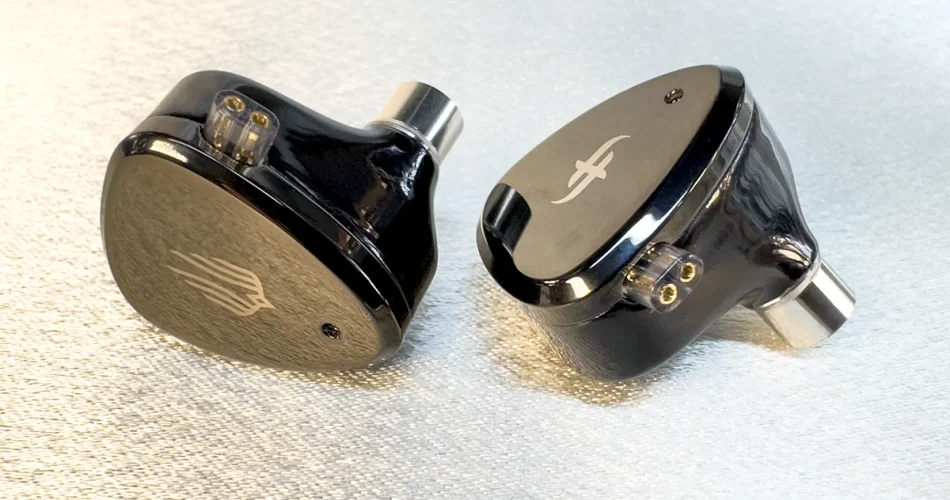IEM Comparisons

I compared the EM6Ls with IEMs at hand to get a picture of how they fare against the competition.
Truthear Zero – 2xDD (USD $49)

Physically the Zeros are larger but quite a lot lighter than the EM6Ls, and stick out further. They also don’t follow the contours of my ears much at all and I have difficulty obtaining a good seal. Requiring 29 volume on the R6P2 they’re similarly easy to drive.
The Zero’s feature higher bass quantity than the EM6L with an emphasis towards midbass, but bass is mushier with poorer texture and its also very noticeable how much more sluggish the Zero’s bass driver is. With greater lower midrange presence I do find vocals on the Zeros more convincing, though having said that the can be a little shouty as well.
For technical performance the EM6Ls easily come out on top in most areas, with the Zeros demonstrating a much more congested sound with confused imaging, worse dynamics and lower resolution. Their soundstage is similarly wide, but in other respects they do sound like entry-level IEMs.
Kiwi Ears Quartet – 2xBA 2xDD (USD $109)

The Quartets are physically quite a bit larger than the EM6Ls but also lighter, and fit quite snugly in the ear to the extent I’d say the EM6Ls more comfortable but don’t isolate quite as well. At 22 volume on the R6P2 the Quartets are bit easier to drive.
With the Quartets’ tuning switches kept in their stock positions, they’re much more midrange centric with more lower midrange presence in particular, and as a result I prefer their tonality. However in other areas they struggle, with sluggish bass that struggles to keep up with the music and more muted treble.
The Quartets have a similarly wide but flat stage, but in other ways compare poorly with lower resolution and much poorer dynamics in particular. They make the EM6Ls sound quite high-end in A/B testing.
ISN Neo5 – 4xBA 1x DD (USD $289)

Despite being similarly sized the Neo5s are physically much lighter & contoured to the ear more, though I find them more comfortable largely on the grounds of the weight difference. Needing 22 volume on the R6P2 they’re slightly easier to drive.
The Neo5s deliver immensely higher quantities of bass with more visceral sub bass impact in particular, though bass very rarely feels bloated and is integrated into the rest of the presentation quite skillfully. Vocals have much more gravitas & presence and are more forward on the Neo5s, and although they’re a little darker in the treble than the EM6Ls this doesn’t seem to affect their technical performance.
The Neo5s boast a slightly deeper stage, greater midrange resolution, and have a way of portraying instruments that sound larger. Their overall tuning is one I find a lot more engaging, and indeed they’re probably my favourite earphone under $500 so it’s no surprise the EM6Ls suffer by comparison.
Penon Globe – 2xBA, 1xDD (USD $329)

Despite being slightly larger & sticking out quite a bit more I find the Globes lighter and a little more comfortable than the EM6Ls, and requiring just 21 volume on the R6P2 they’re easier to drive.
The Globes boast greater bass quantity, though being biased towards midbass it can feel a tad hollow at times, but the EM6Ls bass’ definitely feels mushier & slower by comparison. However the biggest difference between them lies in the midrange where the Globes render vocals that are far more forward, bodied and resolving to the extent they really fixates attention. Whereas the EM6Ls are more politely tuned with smoother & less aggressive vocals.
The Globes may have a slightly narrower stage but it feels a bit deeper, and they’re much more dynamic with slightly higher resolution. However it’s the Globes vastly superior tonality rather than any differences in technical performance that really sets the two IEMs apart.
ISN EST50 – 2xBA, 1xDD, 2xEST (USD $449)

The EST50s are much larger and also stick out a lot more, but are more sculpted to the ear & slightly lighter, though comfort is similar. Requiring 22 volume on the R6P2 they’re a bit easier to drive.
The EST50s boasts deeper bass with more sub bass impact in particular, bass texture is also superior and its’ DD bass driver is also faster. The EST50 has a fairly pronounced V-shaped tuning so treble is also more prominent than that of the EM6L, and thanks to its’ EST drivers of higher quality as well.
Though the midrange is not the EST50’s strength, it features more lower midrange prominence than the EM6L and I prefer the EST50 tonality as a result. Soundstage dimensions are similar between the two, though the EST50 has more pinpoint imaging and slightly higher resolution.
Page 1 – Introduction, Packaging & Ergonomics
Page 2 – Sound Impressions, Harman Target Thoughts & Technical Performance
Page 3 – IEM Comparisons
Page 4 – Cable Comparisons
Page 5 – Conclusion


Comments